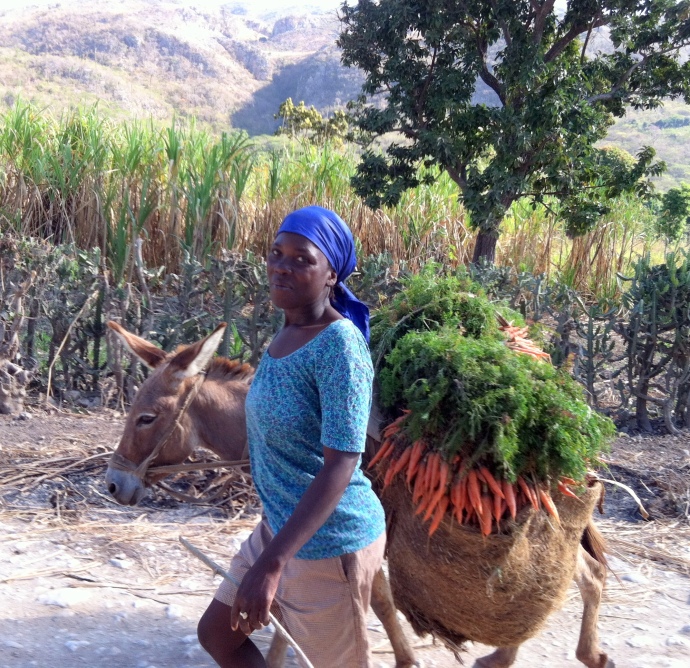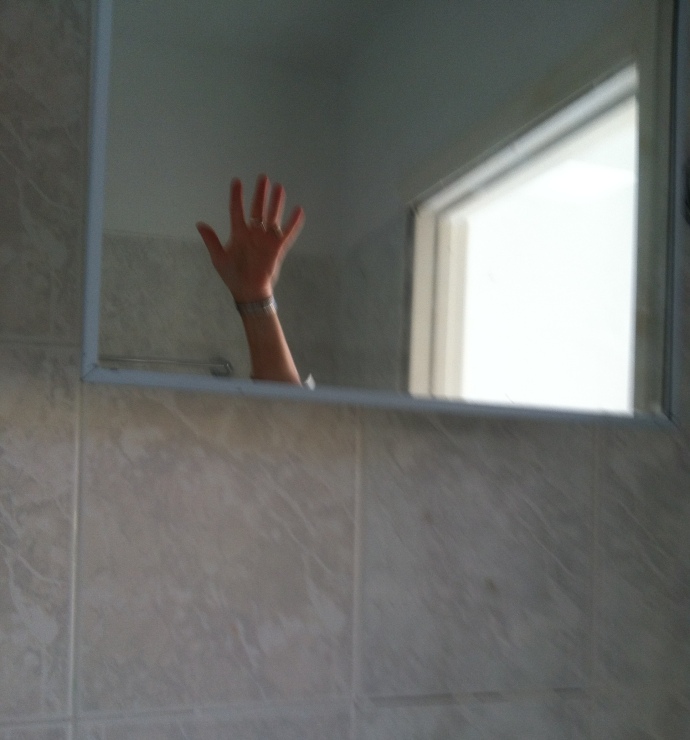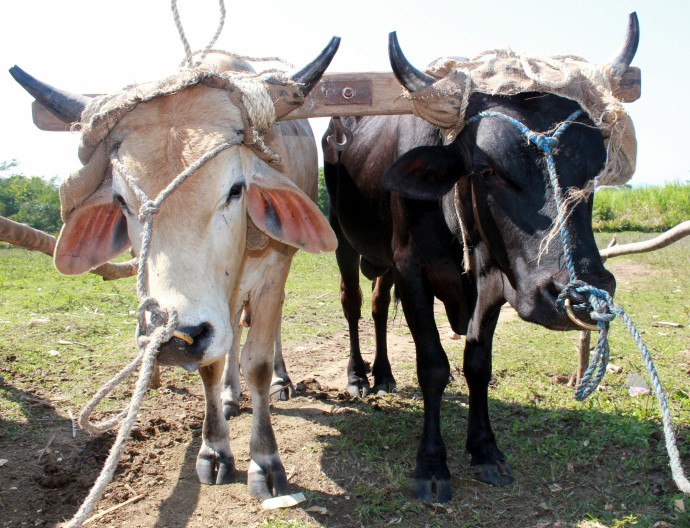 My last day in the countryside of Haiti was one of the best, because I spent the whole day in the company of Ewaldy. (Well, to be honest, the start of the day was a bit rocky when we had to use a twisted wire hanger & a wad of Ewaldy’s bubblegum to pry open the car door after I cleverly locked the keys in the Heifer truck.)
My last day in the countryside of Haiti was one of the best, because I spent the whole day in the company of Ewaldy. (Well, to be honest, the start of the day was a bit rocky when we had to use a twisted wire hanger & a wad of Ewaldy’s bubblegum to pry open the car door after I cleverly locked the keys in the Heifer truck.) 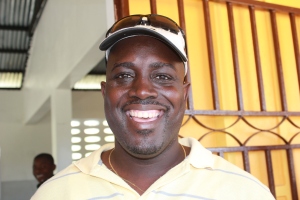
Ewaldy Estil is the Northern Regional Coordinator and has been working for Heifer International since June 2000. As he puts it, it’s not a job, it’s his life mission. When he’s not running Heifer projects (and even when he is) he belts out gospel and reggae music (you should hear his awesome original “Passing on the Gift” song!) and despite the fact that he travels nonstop and keeps ridiculously long hours, he never stops smiling.
Ewaldy and I were driving from the town of Hinche in the Central Plateau up to Cap Haitien through some beautiful farmland, on the way to the small town of Milot where I was going to watch a Heifer training session in action.
When we drove into Milot, the men of the village were under a tree listening to Paul Dieulem, a farmer from nearby DonDon that Heifer has trained and hired to take Milot farmers through the arduous process of turning a team of 2 cows into draft animals. It’s a 20-day course that covers everything from raising forage crops for feed to making yokes; learning to tie the animals together; teaching the animals to move in tandem and follow commands; training them to carry a load by dragging a big log behind them; and perfecting the strenuous work of plowing with that team. (I felt like I was re-reading Little House on the Prairie!)
At the end of 20 days, each farmer will have a team of cattle that can do the work of 20 men –and part of the income they raise plowing other people’s fields will repay the cost of the cattle (about $1000 per cow) to pass on the gift to other farmers in the community. I watched them practice yoking, and I can tell you, it’s no small endeavor to tie two 800-pound animals together! When one farmer asked why they had to repay the gift of cows, Ewaldy had a spirited conversation about Heifer’s philosophy of no free hand-outs & community responsibility that had the whole group laughing and arguing and shouting the other farmer down. (I was secretly waiting for Ewaldy to break into song.)
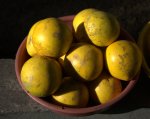 Heifer has also been working in Milot to train women in food processing, so they can earn an income making jelly and liqueurs from the passion fruit, grapefruit and sour oranges that grow in abundance here. At first I was slightly shocked that making liqueur would qualify as an enterprise, until I remembered that Denver’s favorite mayor and now Governor of Colorado John Hickenlooper started as a microbrewer of artisanal beer, so I’m thinking this is just the first step on the road to women taking political office in Haiti!
Heifer has also been working in Milot to train women in food processing, so they can earn an income making jelly and liqueurs from the passion fruit, grapefruit and sour oranges that grow in abundance here. At first I was slightly shocked that making liqueur would qualify as an enterprise, until I remembered that Denver’s favorite mayor and now Governor of Colorado John Hickenlooper started as a microbrewer of artisanal beer, so I’m thinking this is just the first step on the road to women taking political office in Haiti!
 Madame Laurent Pauline has been one of the most successful small entrepreneurs, and she now sells about 30 small bottles of liqueur every week for 50 Haitian gourds (@$1.22) apiece. (Passion fruit is the most popular flavor because it’s considered a bit of an aphrodisiac, as Pauline laughingly relates.) This income helps her send her five children to school, while her husband is learning to work with the draft animals to earn more money.
Madame Laurent Pauline has been one of the most successful small entrepreneurs, and she now sells about 30 small bottles of liqueur every week for 50 Haitian gourds (@$1.22) apiece. (Passion fruit is the most popular flavor because it’s considered a bit of an aphrodisiac, as Pauline laughingly relates.) This income helps her send her five children to school, while her husband is learning to work with the draft animals to earn more money.
Twenty women of Milot were trained by Heifer and have built a network of licensed food processors who are planning to establish a revolving fund for micro-loans to help other women get the trainings and start their own businesses. I’m sure that there is a lot of potential for growth as Pauline definitely has the gift of salesmanship and plans to make her own labels, expand her line to include coffee & cacao liqueurs, and sell, sell, sell. I was dying to taste her product, but as it was Carnaval celebration week, she was plumb sold-out. (By the way, Haitians do not drink frequently, and at the size and potency of the bottles Pauline sells, there’s not much chance of serious inebriation.)
By the time we reached Cap Haitien that night, I was eager to sleep in a real hotel (our Hinche hotel had left a bit to be desired) and to release Ewaldy from the chore of driving me around so he could get back to his wife and two little children. I was flying back to Port-au-Prince the next day, and then heading home to Atlanta, and I was feeling sad to be leaving Haiti. 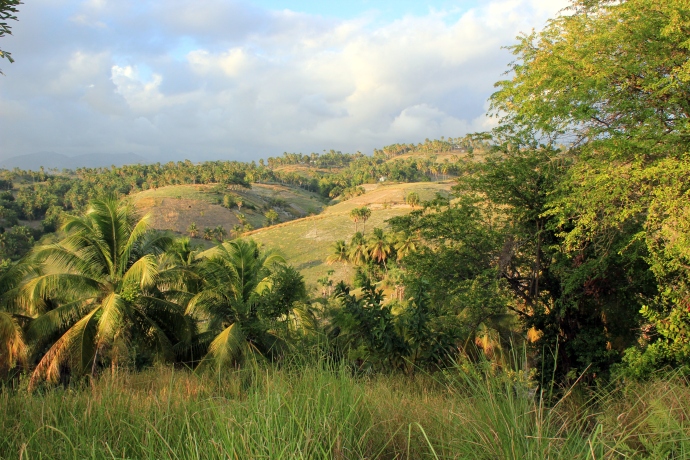
All these beautiful people and places – how could I stop wondering what would happen to them?
Then I realized that they were in good hands with Ewaldy and crew. And I would be coming back (I will, no matter what!). And that as much as I’ve loved Haiti, I’ll probably love Peru just as dearly. (I’m leaving tonight!)
So.. the journey continues. I hope you’ll come along!

